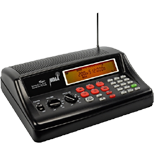

IntroductionĪn increasingly important tool for medical diagnosis and biomedical research, Optical Coherence Tomography (OCT) enables two and three dimensional visualization of the internal structure and morphology of tissue. Improvements in the speed and performance of 3D-OCT volumetric imaging promise to enable earlier diagnosis and improved monitoring of disease progression and response to therapy in ophthalmology, as well as have a wide range of research and clinical applications in other areas. Rapid repetitive imaging of 3D volumes also provides dynamic volumetric information (4D-OCT) which is shown to enhance visualization of retinal capillaries and should enable functional imaging. Cone photoreceptors in some regions of the retina can be visualized without adaptive optics or active eye tracking.
Scan master p2770 goes off registration#
Rapid repetitive imaging over small volumes can visualize small retinal features without motion induced distortions and enables volume registration to remove eye motion. Orthogonal registration scans are used to register OCT raster scans and remove residual axial eye motion, resulting in 3D-OCT data sets which preserve retinal topography. Imaging with ~8–9 micron axial resolution at 250,000 axial scans per second, a 512 × 512 × 400 voxel volumetric 3D-OCT data set can be acquired in only ~1.3 seconds. The high acquisition speeds enable dense raster scanning to acquire densely sampled volumetric three dimensional OCT (3D-OCT) data sets of the macula and optic disc with minimal motion artifacts. Ophthalmic OCT imaging of the normal human retina is investigated. Ultrahigh speed imaging at > 300,000 axial scans per second with standard image resolution is also demonstrated. A high resolution spectrometer design improves sensitivity roll-off and imaging range performance, trading off imaging speed to 70,000 axial scans per second. Ultrahigh resolution OCT with 2.5–3.0 micron axial image resolution is demonstrated at ~100,000 axial scans per second. Several design configurations are characterized to illustrate trade-offs between acquisition speed, resolution, imaging range, sensitivity and sensitivity roll-off performance.

We demonstrate ultrahigh speed spectral/Fourier domain optical coherence tomography (OCT) using an ultrahigh speed CMOS line scan camera at rates of 70,000–312,500 axial scans per second.


Note the Boolean sign must be in upper-case.


 0 kommentar(er)
0 kommentar(er)
